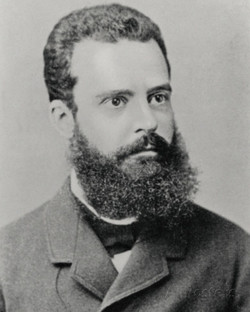About Vilfredo Pareto

Born on July 15, 1848 in Paris, France, Vilfredo Pareto was an Italian economist and sociologist who also made contributions to political science and philosophy. His notable work focused on the study of income distribution, individuals’ choice analysis and mass and elite interactions. Among many of his significant contributions, Vilfredo Pareto is credited with making the concept of “elite” widely used in social analysis, introducing the notion of Pareto efficiency and advancing the discipline of microeconomics.
Pareto’s name is known to wider public for the 80/20 rule which he discovered while observing pea yield in his garden. He noticed that not all pea plants were yielding the same amount. In his estimation 20% of pea pods produced 80% of the yield. Vilfredo Pareto applied the same logic to the land distribution in Italy and found that 80% of the land was owned by 20% of the population. This gave birth to the Pareto principle.

Vifredo Pareto studied mathematics and physics and the University of Turin. He graduated the university in 1869 to become an engineer and then a director of an Italian railway. While living in Florence and delivering lectures on economics and management at the local university, he took interest in politics and philosophy and started writing articles on various economic issues. In these articles he started using mathematical tools to analyze economic phenomena.
The University of Lausanne in Switzerland selected Vilfredo Pareto as the chair of the political economy department in 1893. Pareto succeeded Léon Walras, a notable French mathematical economist. Vilfredo Pareto remained in Switzerland for the rest of his life since. It was in Lausanne wher he discovered that 20% of the population in Italy owned 80% of the land. In a book published in 1909, he claimed such distribution generally applied to wealth and was consistent from a society to a society and was true for any age of the human history.
Vilfredo Pareto made significant contributions to modern welfare economics. He developed a concept of Pareto Optimum according to which the societal resource allocation optimum is not achieved until there is a possibility to make at least one person better off without compromising the well-being of the rest of the members of society. Although the theory of indifference curves was first developed by Francis Edgeworth, Vilfredo Pareto was the first who actually drew the curves. This analytic instrument is widely used in economics.
In his later years Vilfredo Pareto turned to sociology and developed the first social cycle theory in sociology called circulation of elites. He formulated this theory in Trattato di sociologia generale (1916) which was translated as “The Mind and Society” and published in English in 1935. According to the circulation of elites’ theory the regime changes happen when the ruling elites are replaced by other elites. The ordinary people do not represent the main actors, but are followers of various elites. It seems that the reason why Vilfredo Pareto pursued sociology in his later years is due to his curiosity to understand why mathematical concepts used in economics failed to explain real life. In his view random social factors intervened in daily lives which made social phenomena irrational.
The University of Lausanne in Switzerland selected Vilfredo Pareto as the chair of the political economy department in 1893. Pareto succeeded Léon Walras, a notable French mathematical economist. Vilfredo Pareto remained in Switzerland for the rest of his life since. It was in Lausanne wher he discovered that 20% of the population in Italy owned 80% of the land. In a book published in 1909, he claimed such distribution generally applied to wealth and was consistent from a society to a society and was true for any age of the human history.
Vilfredo Pareto made significant contributions to modern welfare economics. He developed a concept of Pareto Optimum according to which the societal resource allocation optimum is not achieved until there is a possibility to make at least one person better off without compromising the well-being of the rest of the members of society. Although the theory of indifference curves was first developed by Francis Edgeworth, Vilfredo Pareto was the first who actually drew the curves. This analytic instrument is widely used in economics.
In his later years Vilfredo Pareto turned to sociology and developed the first social cycle theory in sociology called circulation of elites. He formulated this theory in Trattato di sociologia generale (1916) which was translated as “The Mind and Society” and published in English in 1935. According to the circulation of elites’ theory the regime changes happen when the ruling elites are replaced by other elites. The ordinary people do not represent the main actors, but are followers of various elites. It seems that the reason why Vilfredo Pareto pursued sociology in his later years is due to his curiosity to understand why mathematical concepts used in economics failed to explain real life. In his view random social factors intervened in daily lives which made social phenomena irrational.

